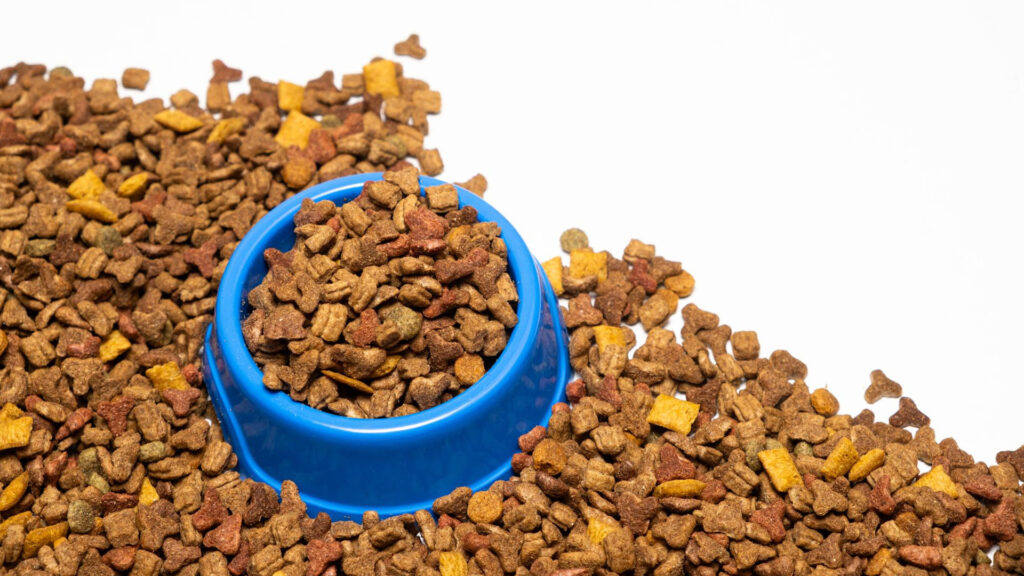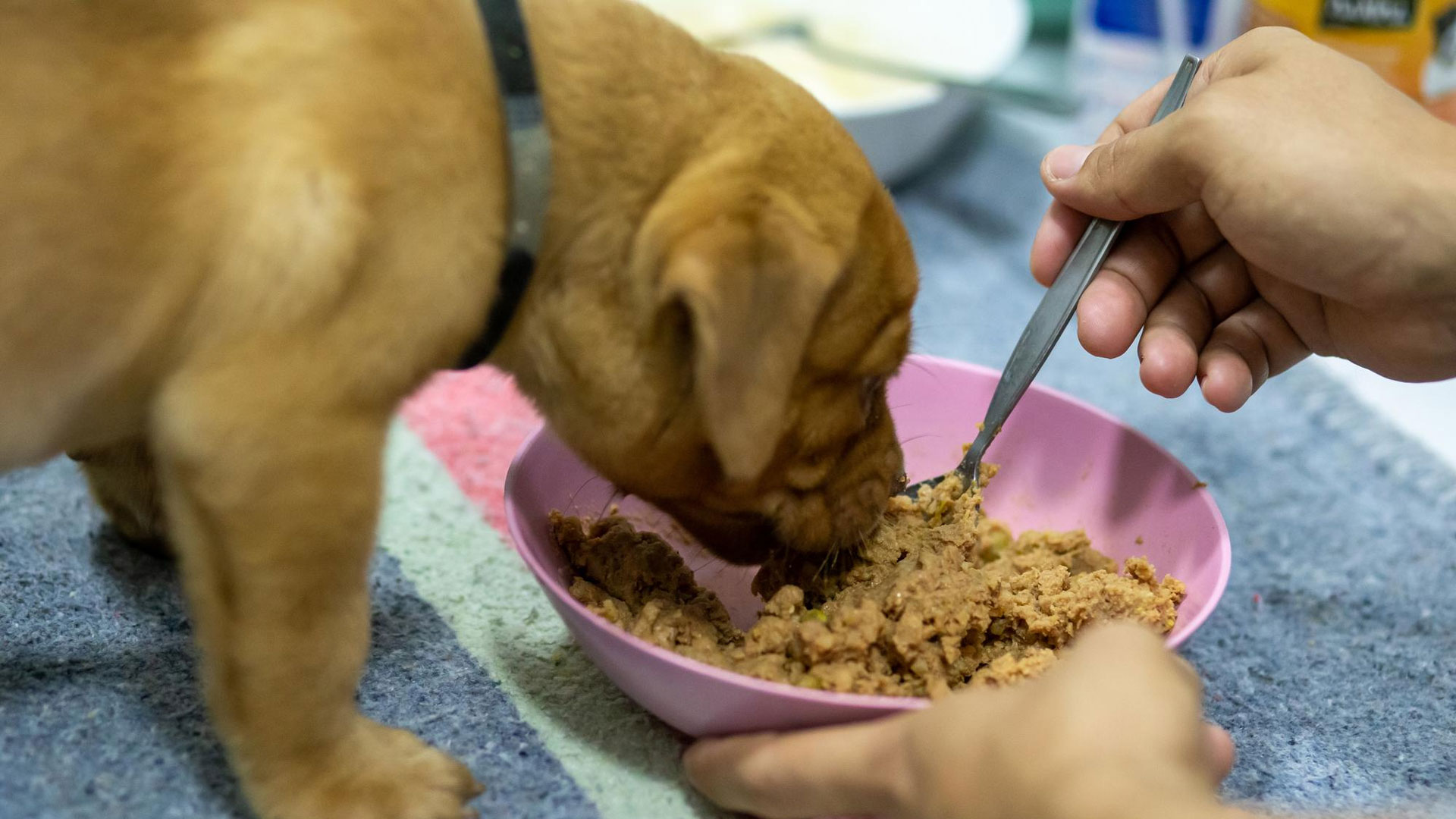Hey there, pet parents! Have you ever wondered what’s really in your furry friend’s food bowl? Just like us, our pets need the right kind of food to stay happy and healthy. Today, we’re going to dive into the world of pet nutrition and figure out how to pick the best chow for your pet’s chompers!
Understanding pet nutrition: how to choose the best food for your pet’s needs is like being a detective. You need to look at the clues on the food label. The ingredients list tells you what’s inside, and they’re listed by weight. Whole meats or meat meals, like chicken or fish, should be at the top. That means there’s lots of it inside. Also, check for healthy veggies, fruits, and grains, which give your pet energy and vitamins. But watch out for hard-to-say additives – these can be unnecessary or even unhealthy for your pet.
Remember, every pet is unique. A playful puppy might need more calories than a sleepy senior dog. And a fluffy cat might need different nutrients than a tiny hamster. It’s important to match their food with their lifestyle, age, and any special health needs they might have. Your vet can be a great partner in figuring out the perfect diet. They can give advice tailored just for your pet, making sure every meal is a step towards a long and healthy life.
So, when you’re next peering into that pet food aisle, think about what your pet loves to do and what they need to thrive. With a little knowledge, you’ll be a pro at understanding pet nutrition in no time!
What Does Your Pet Need to Eat?
Every pet is unique, just like people. Think of how some friends are always on the go, while others prefer relaxing at home. Pets are the same! They have different lifestyles, and this affects their dietary needs. Age, size, and activity level are the big three factors that determine what your furry friend should munch on.
Let’s talk about the little ones first. Puppies and kittens are like tiny bundles of energy, always playing and exploring. They’re also growing super fast, which means they need more calories to help their bodies develop properly. It’s sort of like how kids need healthy, balanced meals to grow up strong. But instead of human food, they need specially formulated pet food that’s packed with nutrients.
As for the older pets, imagine your grandpa or grandma; they probably don’t run around as much as they used to. It’s the same with senior pets. Since they’re not as active, they don’t need as many calories. Eating too much could make them gain weight, and just like people, that’s not good for their health. So, older pets might need food that’s lower in calories but still has all the nutrition they need to stay healthy.
Now, what about those pets that are always in motion? If your pet is an energetic whirlwind, racing from one end of the yard to the other, they’ll need more energy from their food. It’s like how a soccer player needs to eat lots of healthy foods to keep running on the field. Active pets need food that’s high in energy and nutrients to stay in tip-top shape.
Here’s the deal: choosing the right food for your pet can seem tricky, but it’s all about matching their diet to their lifestyle. When you’re picking out food, think about what they spend their day doing. Are they a sprinter, a couch potato, or somewhere in between? Once you’ve figured that out, you can find food that’s got the right balance of calories and nutrients for them.
Remember, if you’re ever unsure about what’s best for your pet, it’s a great idea to talk to a vet. They’re like nutrition coaches for animals and can give you expert advice on what’s best for your furry friend.
Decoding the Mystery of Pet Food Labels
Spotting the Right Nutrition Claims
Looking at a pet food label can sometimes feel like you’re trying to solve a puzzle. To make it easy, start by spotting terms like “complete” and “balanced”. These are not just fancy words; they’re actually your clue that the pet food has all the essential nutrients your furry friend needs for their daily activities. It’s like finding a treasure map that leads you to the best health for your pet.
Understanding the Ingredients List
Next, dive into the ingredients list. Just like when you pick out snacks for yourself, the first few items on that list are the most important. You want to see high-quality proteins listed first—things like beef, chicken, or fish. These are the building blocks for your pet’s muscles and overall health. It’s similar to picking a team for a game; you want the strongest players first!
Being Smart About Fillers
Now, let’s talk about fillers. These are ingredients like corn and wheat, which don’t offer much nutrition. They are often used to make the food cheaper to produce and to fill up the bag. But just like in a game of hide and seek, you want to find the hidden gems, not the stuff that just takes up space. So, keep an eye out for these fillers and remember that they shouldn’t be at the top of the ingredients list.
Feeding Your Pet Right
By understanding these label secrets, you’re on your way to becoming a pet food detective. Remember, you’re not just looking for something that will fill your pet’s belly but also nourish their body. So, take a moment to read that label before you buy. Your pet will thank you with wags and purrs for the delicious, nutritious meals you’ll provide!
Special Diets for Special Pets

Just like people, pets can have unique dietary needs. Sometimes, our furry friends suffer from food allergies that can cause itchy skin or digestive issues. Other times, they may have sensitive stomachs that are easily upset by certain ingredients. Recognizing the signs of dietary discomfort in your pet is crucial. Look for symptoms like excessive scratching, vomiting, or diarrhea. These could be indications that your pet’s current diet isn’t agreeing with them.
Fortunately, there’s a variety of special pet foods available to cater to these needs. Hypoallergenic formulas are designed for pets with allergies and usually contain limited ingredients to minimize the risk of an allergic reaction. For pets with sensitive stomachs, there are foods that include easily digestible ingredients and probiotics to support gut health. It’s important to pay attention to your pet’s reaction when you switch foods, to ensure that the new diet is making a positive difference.
Before you start exploring the pet food aisle for alternatives, consulting with your veterinarian is a smart move. Vets have a deep understanding of pet health and can recommend specific brands or types of food that align with your pet’s dietary restrictions. They might also suggest tests to rule out other health issues. After all, the goal is to find a diet that keeps your pet healthy, energetic, and happy.
Remember, switching your pet’s food should be a gradual process. Sudden changes in diet can cause additional stomach upset or rejection of the new food. Transition your pet slowly by mixing the new food with the old in increasing amounts over the course of a week or so. This will help your pet’s system adjust without much trouble.
At the end of the day, our pets rely on us to make the best choices for their health. By being observant, consulting professionals, and carefully introducing new foods, you can ensure that your pet’s diet is not only special but also perfectly suited to their individual needs. Happy, healthy pets make for a happy home!
Why Quality Food is a Big Deal
Choosing the Right Fuel for Your Furry Friend
Just like a car needs the right kind of gas to run smoothly, your pet needs the right kind of food to stay healthy. You wouldn’t want to fill up a sports car with low-grade fuel, right? Well, the same goes for your pet. High-quality food might cost a bit more up front, but it’s made with better ingredients. These ingredients can help your pet have more energy, a shinier coat, and a happier life overall.
What’s in Your Pet’s Bowl?
Let’s take a closer look at what’s actually in your pet’s food. Quality pet food often includes whole proteins like chicken or fish, healthy grains or vegetables, and essential vitamins and minerals. These are the building blocks of a nutritious diet for your pet. On the other hand, some cheaper foods use fillers and by-products that don’t give your pet the same level of nutrition. It’s like comparing a fresh, homemade meal to a fast-food burger – one is clearly better for you than the other.
Health Today, Savings Tomorrow
Think of buying better food as an investment in your pet’s health—like putting money in a savings account for the future. When your pet eats a balanced diet, they’re more likely to stay healthy, which means fewer trips to the vet. And we all know that vet visits can be expensive! So, while you might spend a little more on quality food now, you’ll likely save money on vet bills down the road. Plus, seeing your pet full of life and free from health issues is a reward that’s worth every penny.
Happy Pet, Happy Life
Lastly, let’s not forget about happiness. Pets bring so much joy into our lives, and we want to return the favor. Feeding them top-notch food is one way to do that. A good diet can improve their mood, give them the energy to play, and even help them behave better. It’s amazing how much of a difference the right food can make. Your pet’s tail will wag more, and they’ll snuggle up to you, all because they feel great thanks to the quality food you’ve provided.
Treats and Snacks: The Icing on the Cake
We all love a good treat, and our pets do too! Just like we enjoy a slice of cake or a scoop of ice cream, our furry friends get excited about their own special snacks. However, it’s important to remember that treats for pets are similar to dessert for humans—they should only be a small slice of their overall diet. Think of them as the occasional cherry on top, not the main meal.
Too many treats can lead to weight gain, and nobody wants a pudgy pup or a chunky kitty! Just like with people, carrying extra weight can be bad for your pet’s health. It can cause strain on their joints, make it harder for them to move around, and can even lead to serious health issues like diabetes or heart problems. So, while it’s tempting to give in to those begging eyes, it’s crucial to keep treat time in check.
So, how can you make sure you’re giving your pet the right amount of treats? A good rule of thumb is that treats should make up no more than 10% of your pet’s daily food intake. The rest should come from a balanced diet that meets their nutritional needs. Make sure you’re choosing high-quality treats that provide some sort of nutritional benefit, rather than just empty calories.
Remember, every pet is different, so their needs will vary. A small dog won’t need as many treats as a large dog, and what’s right for a young, active pet might be too much for an older one who lounges more. If you’re ever unsure, it’s a great idea to talk to your vet. They can give you personalized advice based on your pet’s specific needs.
Lastly, keep in mind that treats aren’t the only way to show love. Playing with your pet, going for walks, or simply spending quality time together can be just as rewarding for them. Treats are the icing on the cake, but the real sweetness comes from the loving bond you share with your furry friend.
Home-Cooked Meals vs. Store-Bought Food for Pets
Many pet owners love the idea of creating homemade meals for their furry friends. It’s a loving gesture that can strengthen the bond between you and your pet. However, cooking at home requires a good understanding of what nutrients your pet needs. Pets have specific dietary requirements that can be quite complex. For example, dogs and cats need the right balance of proteins, fats, carbohydrates, vitamins, and minerals. Miss out on one element, and your pet’s health could suffer.
To ensure your pet gets a balanced diet, it’s essential to do your research or consult with a vet. They can help you design a meal plan that covers all the nutritional bases. Remember, each pet is unique, and their needs can vary based on size, age, and health conditions. If you’re up for the challenge, cooking for your pet can be a fun and rewarding experience.
On the other hand, if you’re not confident in your pet chef skills, that’s okay too! High-quality store-bought pet food is a convenient and safe choice. These products are developed by nutrition experts and are designed to meet all of your pet’s dietary needs. When shopping for pet food, look for reputable brands that are transparent about their ingredients and production methods.
Check labels for the American Feed Control Officials (AAFCO) statement. This means the food meets the minimum nutritional requirements for pets. Also, consider your pet’s specific needs—there are formulas available for different life stages, weights, and even certain health issues like allergies or sensitive stomachs.
Whether you opt for home-cooked meals or store-bought options, the most important thing is that your pet is getting a nutritious and well-balanced diet. By taking the time to understand and cater to your pet’s needs, you can help ensure they live a happy, healthy, and energetic life.
When in Doubt, Ask the Experts
If you’re still scratching your head about what food is best for your pet, ask your vet. They’re like a nutrition detective for pets and can help you find the perfect food for your furry family member. Plus, they can give you tips on how much to feed them so they don’t end up rolling instead of running!




